Hussars defended the Republic of Poland for 200 years. It was her murderous effectiveness that determined the greatest Polish victories. Her enemies were terrified of her, her allies admired her. Many times she faced even a dozen times more numerous opponent. And did you know that ...
All the curiosities mentioned here are quoted in his latest book "Husaria. The pride of Polish arms ”Radosław Sikora.
Even the cannonballs couldn't handle them
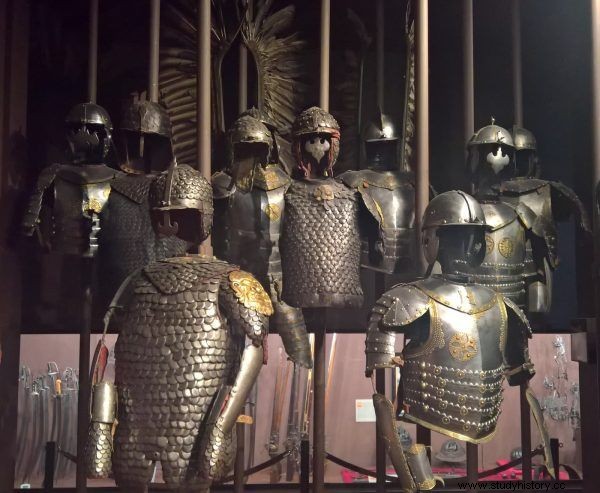
There were cases when the armor protected the hussars even from cannonballs. The photo shows Hussar armor from the collection of the Polish Army Museum in Warsaw.
In a few cases, the armor saved the lives of the hussars wearing them, although they were hit by cannonballs. This was the case, for example, on August 30, 1633, in the battle of Smolensk, or on September 26, 1660, in the battle between Lubar and Cudnów.
They could kill six enemies at once
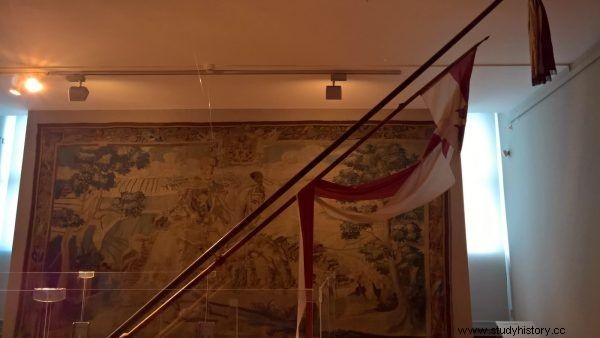
Hussar copies could measure even over six meters. The photo shows original Hussar copies from the collections of the National Museum in Krakow. These are almost five meters.
The longest hussar copies reached 6.2 meters. In the battle of Połonka on June 28, 1660 a single blow with a hussar lance pierced six Moscow infantrymen at once .
There were the most of them near Chocim
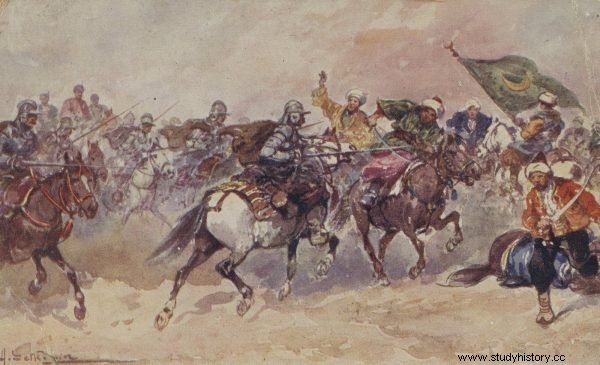
About 8,000 hussars fought near Chocim.
The largest number of hussars in history took part in the battle of Khotyn in 1621. There were 8,520 of them in 53 rotors full-time. However, taking into account the so-called blind portions, we can assume that there were less than 8000 of them.
There were real strongmen among them
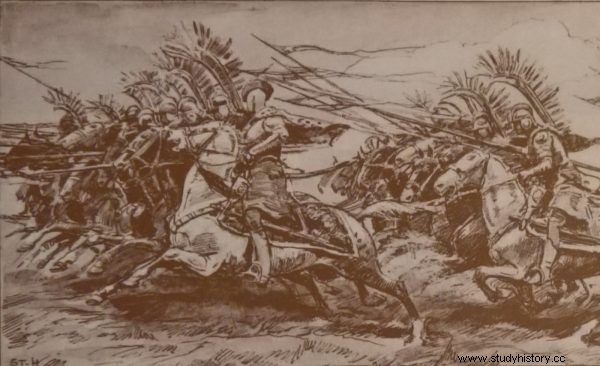
Among the hussars there were some mighty men who could hold three, almost six meters long copies in one hand.
Among the hussars there were strongmen who picked up three ten-digit copies at a time with one hand (10 cubits is almost 6 meters). Another trick was shown by the hussar Zygmunt Kazanowski, who later became the tutor of prince Władsław Vasa. Standing on a sharp point, he turned on it several times without harming his body.
The Swedish king dreamed of having them in his army
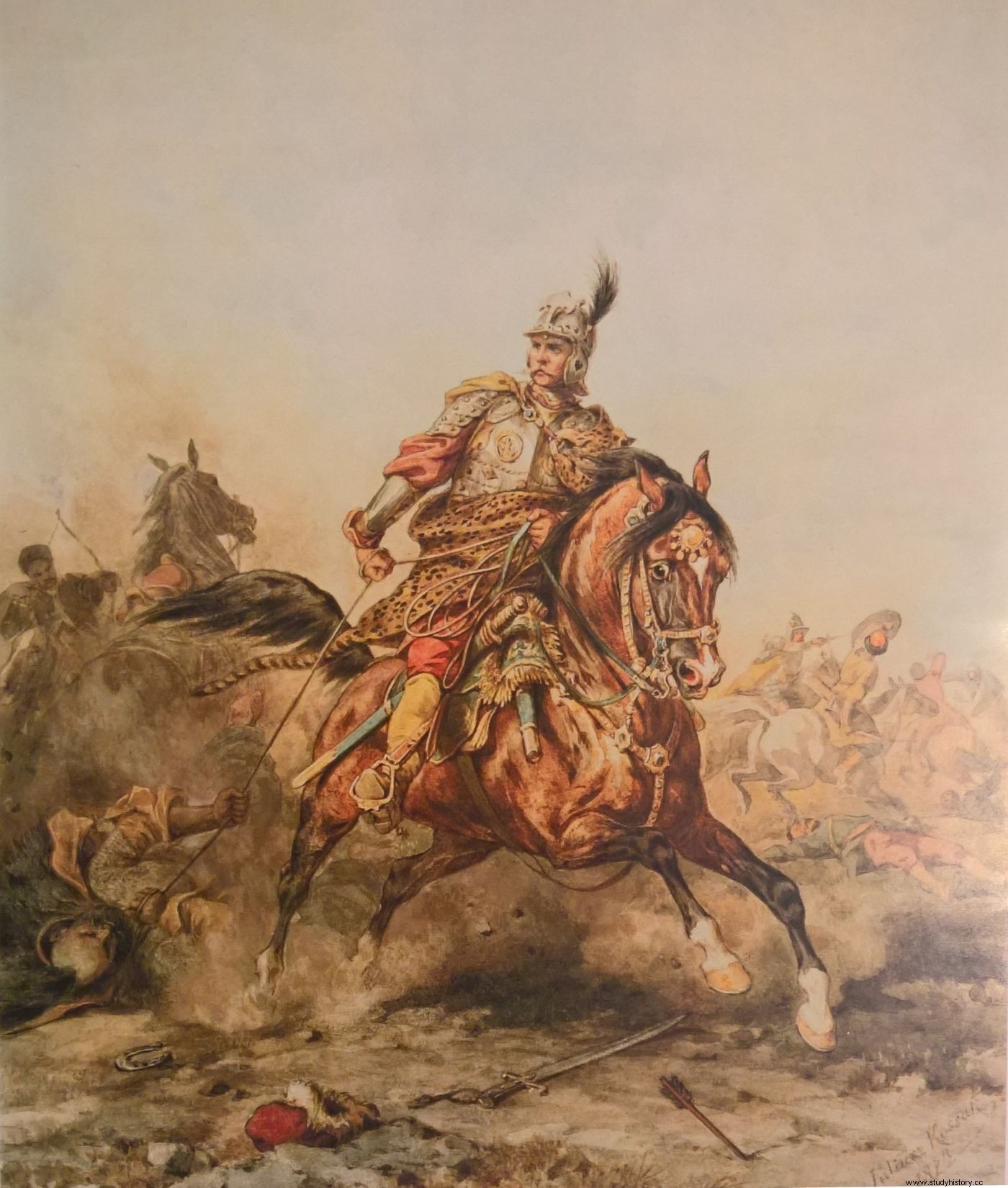
Gustaw Adolf dreamed of such cavalry as hussars. The illustration shows a watercolor by Juliusz Kossak "Hussar's companion".
One of the most respected leaders in human history, the Swedish king Gustav Adolf, was said to have said about the hussars:“Oh, if I had such a ride; I would camp with my foot in Constantinople this year. " Such admiration aroused in him the sight of the hussars, who, carried by their combat zeal, jumped on horses from a steep hill down like a precipice.
All this to strike the Swedish infantry, which, protecting themselves from the hussars' charge, left the ramparts on the hill and descended to its foot, hoping that the steep embankment would prevent Polish cavalrymen from reaching them. It happened on October 1, 1626, in the Battle of Gniew.
They dyed horses
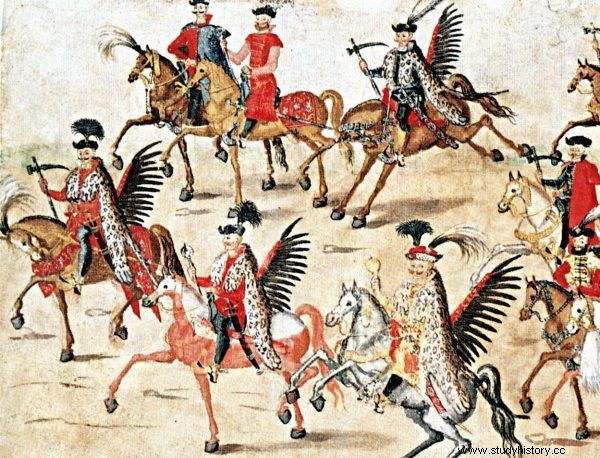
Dyed "ford" Hussar horse on the so-called Stockholm Roll.
Hussars sometimes painted their horses "ford", which can be seen on the Stockholm Roll. Red brasilis with alum was used to dye horses red. Horses were painted not only at ceremonies, but also during hostilities
They were not afraid of even a dozen or so times the advantage of the enemy
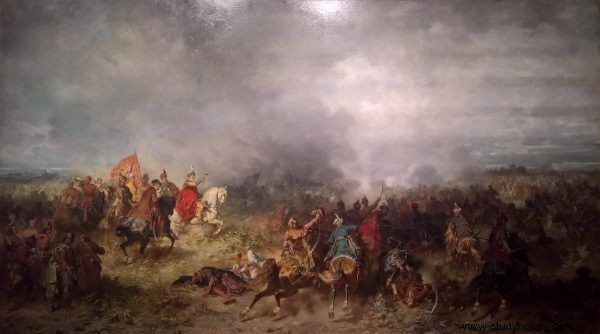
At Chocim, the hussars successfully confronted the nearly seventeen times more numerous troops led by Sultan Osman II.
Hussars defeated even a dozen times more numerous enemy. For example, on September 7, 1621, around 600 hussars chased around 10,000 Ottoman soldiers from the field near Khotyn. In turn, on September 26, 1660, around 140 hussars smashed at least 1700 Cossacks and Muscovites near Kutyszcz.
They were also recruiting from a mass move
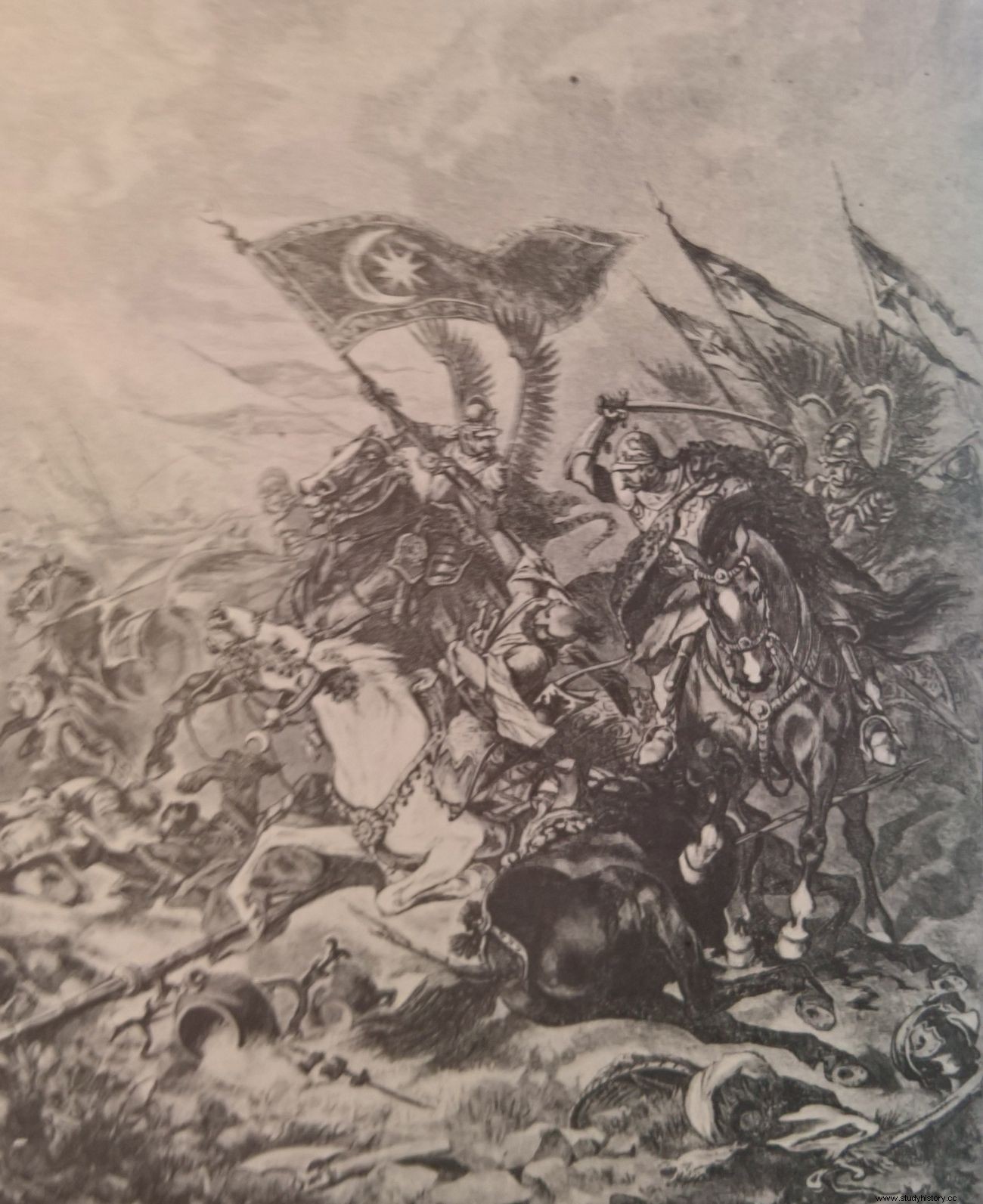
Hussars also recruited from the ranks of the popular movement. The illustration shows a drawing by Juliusz Kossak showing the fight for the Turkish banner at Vienna.
Hussars aren't just regular military, state or private. When a common noble movement was gathering, its members also equipped themselves as lighter cavalry or in Hussar style. For example, in 1665, the Wielkopolska mass movement stood in the strength of 3,900 horses, 1,400 of which were Hussar.
Copies were broken at their funerals
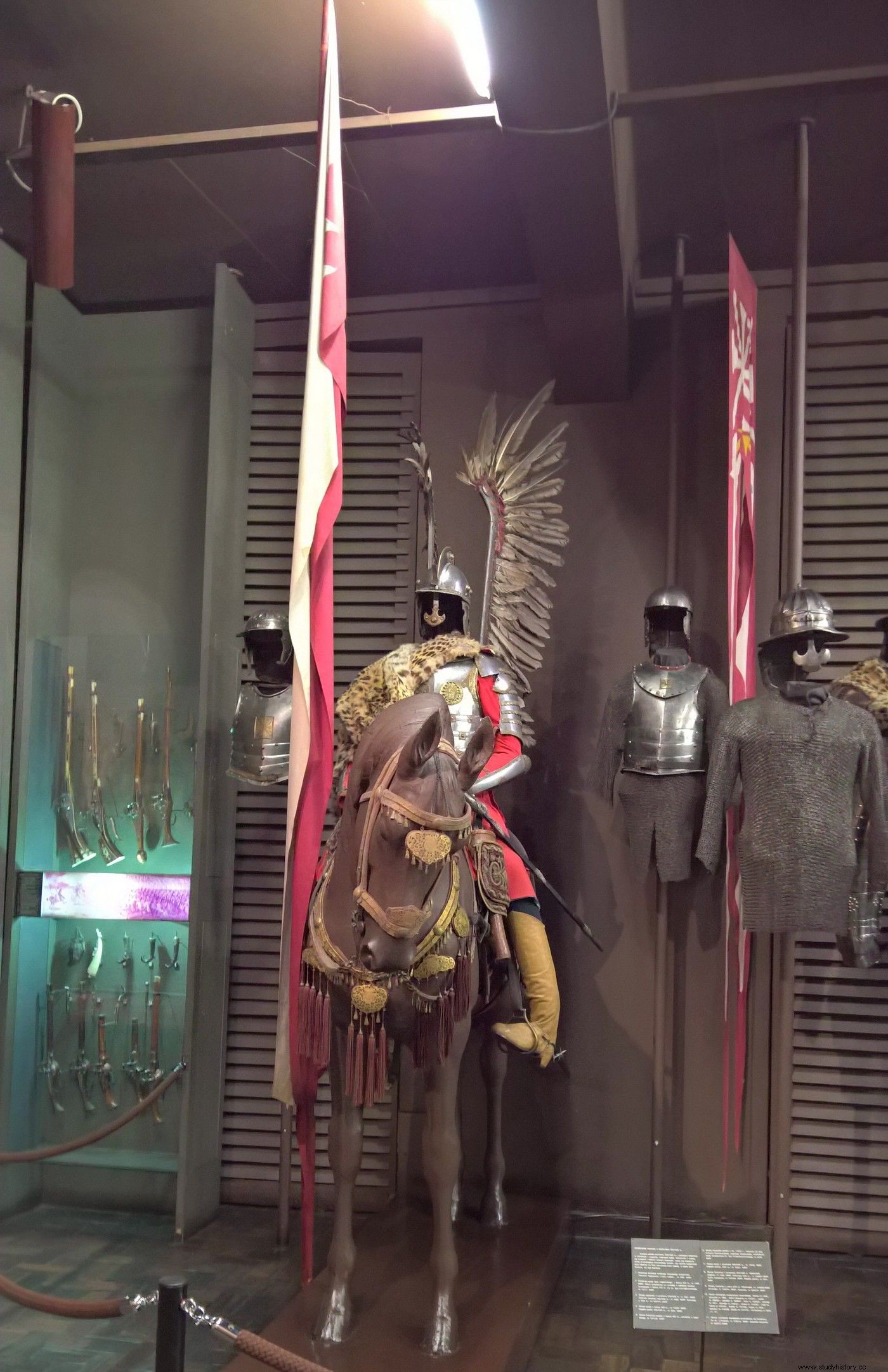
At the funeral of a hussar comrade, a copy was broken on his catafalque.
At the funeral of a hussar comrade, a copy of it was crushed. A horse hussar was rushing into the church, then, hitting the lance in front of the catafalque, he broke it, and himself, as if out of grief for the deceased, fell from his horse to the floor.
Others also had their hussars
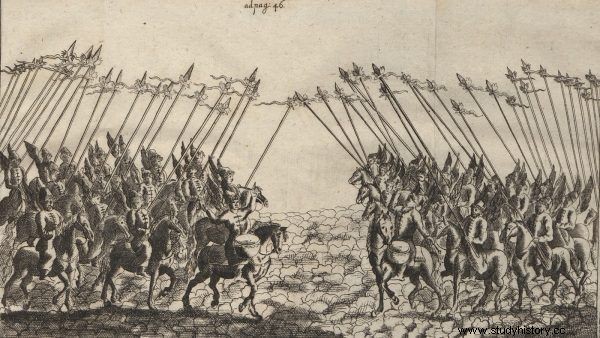
Muscovite winged horsemen who welcomed the Polish legation to Moscow in 1678. Illustration and caption from the book "Husaria. The pride of Polish arms ”.
Hussars were not used only in the Commonwealth. Although it is true that it celebrated its greatest triumphs in the Polish-Lithuanian state, that it took on its special face only in the Commonwealth and that it fought here longer than in other countries, the formation came to us from Serbia and Hungary. It has evolved, inter alia, under Hungarian influence. Husaria for several decades was also owned by Muscovites (although sources are silent about its successes). We can boast that we had the best hussars in the world, but not that, apart from Poland and Lithuania, there was none.
***
You can read more about the best ride in Polish history in the new book by Radosław Sikora entitled "Husaria. The pride of the Polish army ” .
